#young poland
Explore tagged Tumblr posts
Text
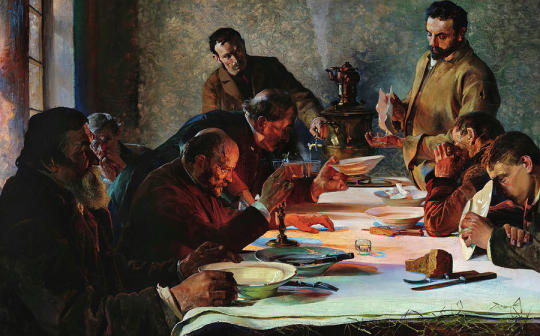
Christmas Eve in Siberia, 1892, Jacek Malczewski
#art#painting#oil painting#jacek malczewski#polish art#young poland#genre art#genre painting#19th century#19th century art#oil on canvas#christmas#polish painter
239 notes
·
View notes
Text
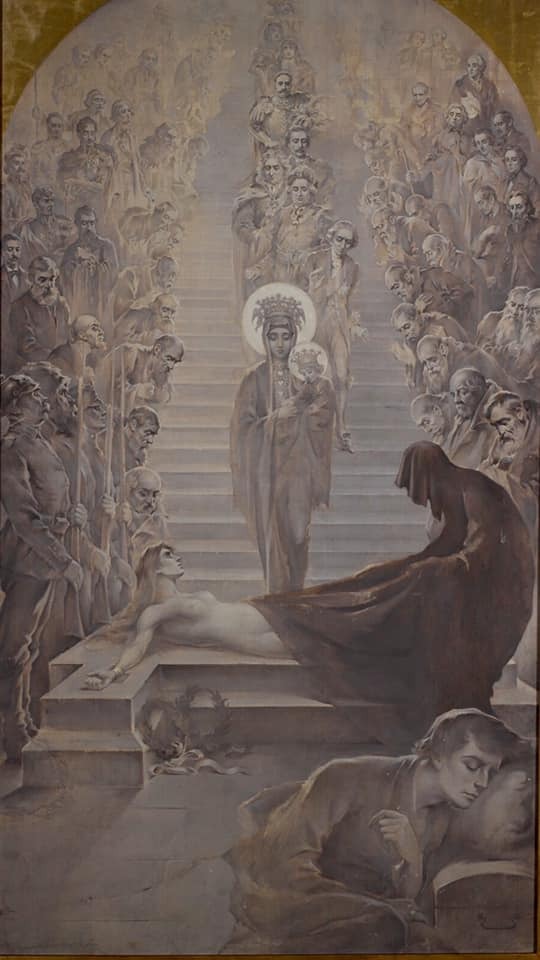
Zygmunt Badowski (Poland, Warszawa, 1875-1959) - „Wyśniony Sen” (The Dream about Poland) - 1918, oil on canvas
Obraz ten jest niezwykle detaliczny, nie udało mi się zrobić ładnego zdjęcia więc kradnę z FB. Na pierwszym planie widzimy młodego emigranta, który śni o odradzającej się ojczyźnie. Biała postać spętana w samym centrum obrazu, Polska, jest rozbierana przez czerwoną śmierć. Unosi ona głowę spoglądając na stojącą nad nią Maryję z Jezusem wzrokiem wyrażającym błaganie i nadzieję na ratunek. Wokół patrzy na nią tłum osobistości: po lewej stronie widzimy generałów państw zaborczych, po środku rząd polskich władców w kolejności chronologicznej, a po prawej stoją polscy uczeni, intelektualiści i artyści (tacy jak Jan Matejko, Adam Mickiewicz, Juliusz Słowacki, Fryderyk Chopin).
This painting is extremely detailed, I couldn't take a good photo so I stole it from FB. In the foreground we can see a young emigrant who's dreaming about Poland, his homeland. White figure shackled in the very center, Poland, is being undressed by red figure - death. She's raising her head looking at Mary with Jesus who stand over her, her gaze seems to be hopefull, begging for the rescue. Behind this scene we see a crowd of people observing what's happening: on the left are the generals of the partitioning countries, in the middle a row of Polish rulers in chronological order, and on the right Polish scientists, intellectuals and artists (such as Jan Matejko, Adam Mickiewicz, Juliusz Słowacki, Fryderyk Chopin).
Bardzo ciekawie czyta się o Zbigniewie Badowskim tutaj w Przewodniku Wystawy Jubileuszowej jego prac z roku 1931, gdyż są to jego własne słowa (jest to pdf więc w zależności od przeglądarki może wam się zacząć pobierać zamiast włączyć w nowej karcie nwm):
#dude looks like the words eepiest soldier#Zygmunt Badowski#polish art#art#Młoda Polska#symbolism#Young Poland#modernism#this one idk lol#polblr
5 notes
·
View notes
Text

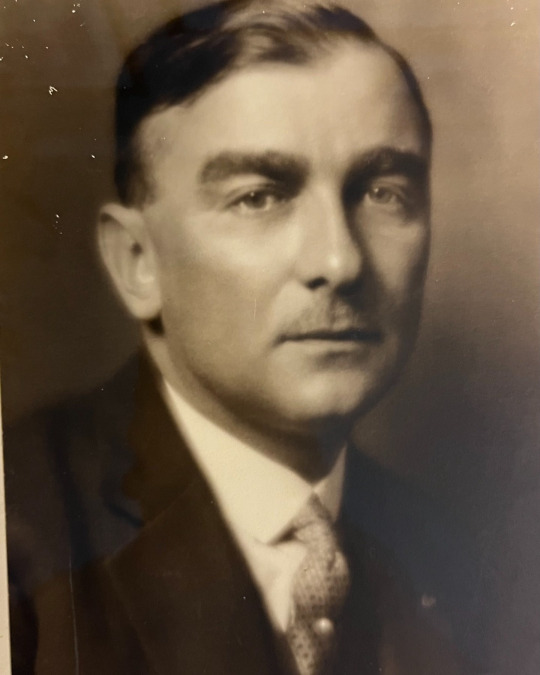


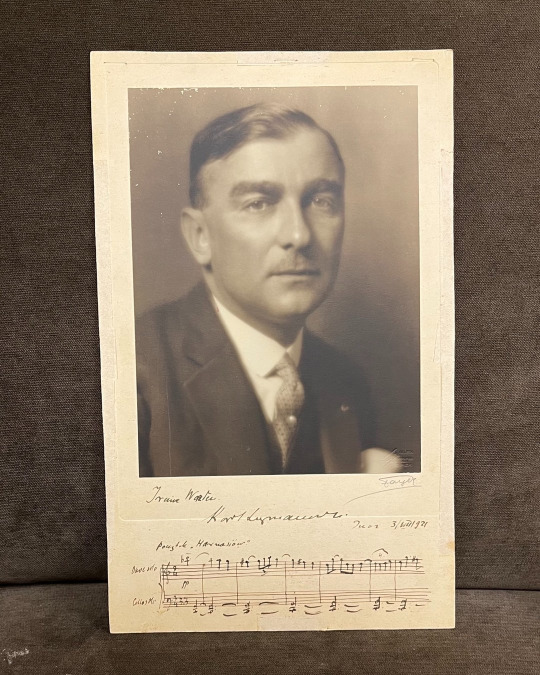
OTD in Music History: Important 20th Century pianist-composer Karol Szymanowski (1882 - 1937) – hailed in some circles as the greatest Polish composer after Frederic Chopin (1810 – 1849) – dies of tuberculosis at a sanitarium in Lausanne, Switzerland. A member of the “Young Poland” modernist movement that flourished in the late 19th and early 20th century, Szymanowski's early works owe a clear debt to the late-Romantic German school (i.e., Richard Wagner [1813 - 1883], Richard Strauss [1864 - 1949], and Max Reger [1873 - 1916]) as well as eccentric Russian "mystic" pianist-composer Alexander Scriabin (1871 - 1915). Later on, however, Szymanowski developed an increasingly personal style which blended elements of free atonality / polytonality, French “Impressionism” (drawing from the work of Claude Debussy [1862 - 1918] and Maurice Ravel [1875 - 1937]), and Polish folk music. Indeed, to that last point, the establishment of an independent Polish state in 1918 inspired Szymanowski to consciously seek to forge a distinctly “Polish” style of “classical” composition – a daunting task that hadn’t been seriously attempted by any major composer since Chopin. Polish musicologist Aleksander Laskowski has opined that Szymanowski "ultimately succeeded in his goal of inventing a musical language all his own [...] His works were true and ingenious creations, and his oeuvre shows an incredible development from the Straussian and Wagnerian aesthetic, through an interesting and very romantic 'Oriental' period, and finishing with a nationalist period.” PICTURED: A publicity headshot of the middle-aged Szymanowski (photographed by the famous “Fayer of Vienna” atelier), which he signed and inscribed to a fan in 1931. Szymanowski has also written out a few measures from the opening of his folk-music-infused ballet “Harnasie," which was not publicly premiered until 1935. Autograph material from Szymanowski is exceedingly rare.
#Karol Szymanowski#Szymanowski#composer#classical composer#pianist#classical pianist#classical music#music history#music#piano#Young Poland#Modernism#German school#Romantic music#Impressionism#Symphony#Violin Concerto#Concerto#King Roger#classical composer#opera#bel canto#aria#maestro#diva#prima donna#chest voice#Salome#Sonata#Overture
17 notes
·
View notes
Text

Józef Mehoffer (Polish, 1869-1946) • Pink Room • 1907-13
#art#fine art#painting#józef mehoffer#polish artist#young poland movement#paintings of interiors#making room blog#paintings of domestic interiors#art nude
7K notes
·
View notes
Text
polish hatsune miku i recently drew! 🇵🇱
i know this will flop but i really wanted to share this on tumblr too.

#hatsune miku#vocaloid#poland#artists on tumblr#digital art#young artist#polishposting#polish art#polishcore#polish tumblr#miku#miku vocaloid#hatsune miku vocaloid#art
284 notes
·
View notes
Text
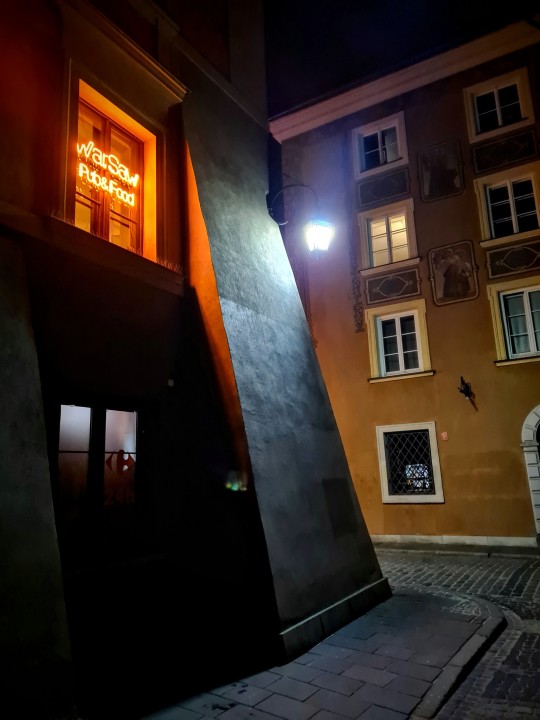
For in our dreams we find ourselves. Who we were. Who we are. Who we can become. Sleep. Dream.
-- Moira Young
(Warszawa, Poland)
#dreams#sleep#moira young#finding yourself#travel photography#warsaw#street photography#become#night#night photography#warszawa#poland#quote
218 notes
·
View notes
Text



kolejny taco pies, tym razem również oki i leosia
#this one for any polish folks in here#keeping turning these funky musicians into furries#pl#poland#polska#polish tumblr#taco hemingway#oki#young leosia#< only one of these 3 tags is a thing#furry
133 notes
·
View notes
Text


#photography#photooftheday#fotografia#poland#young photographer#polska#young artist#black and white#photographer#architecture photography#architecture#architektura#streetshot#streetphotography#street#blur photography#blur#monochrome#buildings#motion#black and white photography#gdańsk#gdansk#digital photography#abstract#artists on tumblr#original photographers#photographers on tumblr#fotografia uliczna#reflection
43 notes
·
View notes
Text



my arcane highschool au that was sitting in the folder for way too long
i basically threw them into my hs and ill do more probably since im back from break again lol
#in kinda too tired to add a translation rn#lore to 1st pic#we have. 3h of english like one by one on tuesday#and it do be looking like that#sometimes#almost everytime#mikis art#arcane#jayce talis#viktor arcane#sky young#salo arcane#arcane au#arcane highschool au#arcane poland au#??#academic weapons
32 notes
·
View notes
Text






Some Saw meme's in my language i made
Bonus✨

#saw franchise#saw memes#saw movies#amanda young#logan nelson#mark hoffman#lawrence gordon#jill tuck#john kramer#bobby dagen#daniel matthews#polska#poland
29 notes
·
View notes
Text



🐈
#artists on tumblr#aesthetic#artwork#original art#digital art#graphic design#graphic art#procreate#small artist#queer artist#digital artist#young artist#support young artists#poland#polish art#polish artist#my art#colourful#pinterest
16 notes
·
View notes
Text
i installed open video downloader, a FLOSS utility for ripping youtube videos, which is such an easy to use & convenient program, & it reminded me of the campaign i went on (completely unsuccessfully) a couple years ago to get clickless mouse added to the patron computers in my public library, because i had watched multiple older adults struggle immensely to double-click on our computers, went looking for an easy solution for them, & found that someone had already thoughtfully written an elegant & adaptable little program, initially intended as an accessibility tool for a particular friend of theirs. this is why i love FLOSS projects so much: they're usually personal passion projects, at least at the outset, & they reflect such powerfully pro-social values that even when they have nothing to offer me in particular i am delighted by them. thank u to all FLOSS devs <3
#not to paper over the serious problems with burnout & related issues in FOSS! there are real questions about funding & fairness & so on.#but it always makes me think of how the internet & its infrastructure is so young & important parts of it are the product#of very personal labor; idiosyncratic perspectives; great hope. not to glamorize or paper over very serious problems in 'tech'!#but surely if anything about the internet is lovable it is a software dev in poland sharing a free program they wrote#so everyone can use a mouse without pain?#still mad library IT didn't take me seriously on this one. i get why it didn't happen but i do not forgive
13 notes
·
View notes
Text
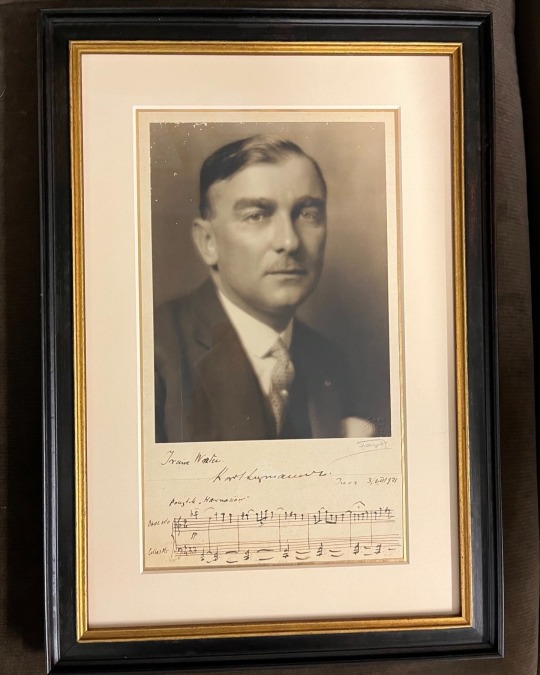
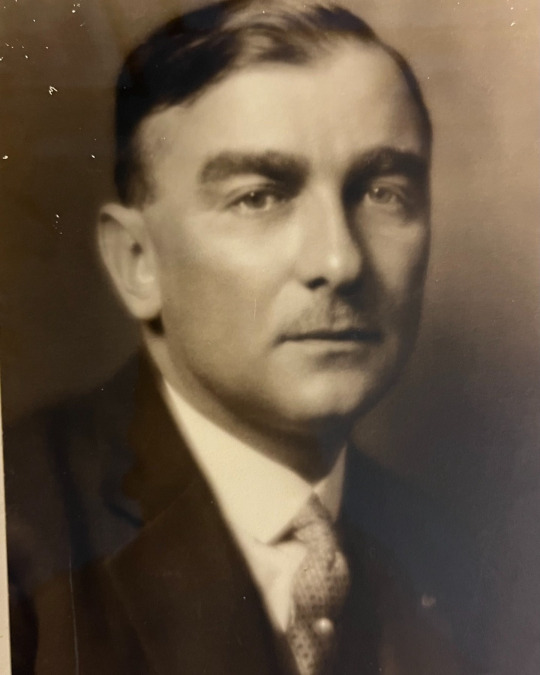
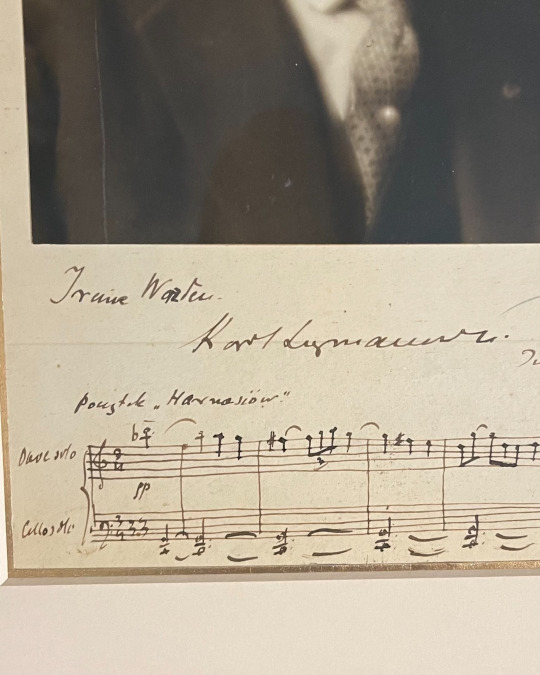
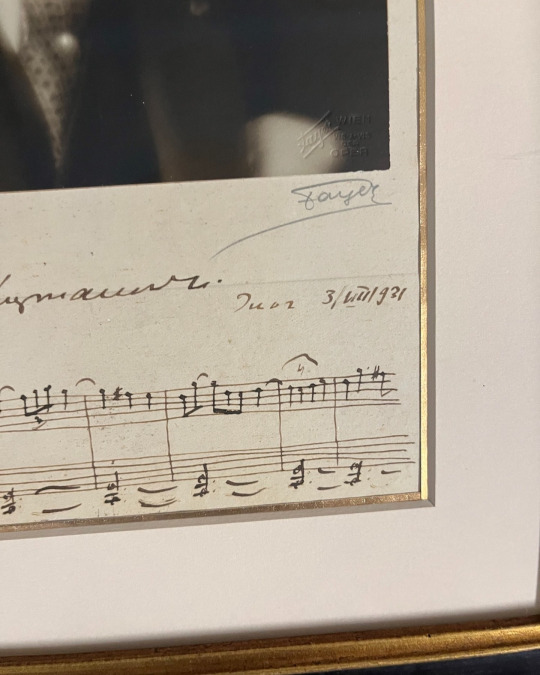
OTD in Music History: Important 20th Century pianist-composer Karol Szymanowski (1882 - 1937) – hailed in some circles as the greatest Polish composer after Frederic Chopin (1810 – 1849) – dies of tuberculosis (just like Chopin), in Switzerland.
A member of the “Young Poland” modernist movement that flourished in the late 19th and early 20th century, Szymanowski's early works owe a clear debt to the late-Romantic German school (Richard Wagner [1813 - 1883], Richard Strauss [1864 - 1949], and Max Reger [1873 - 1916]) as well as the eccentric Russian "mystic" pianist-composer Alexander Scriabin (1871 - 1915).
Later on, however, Szymanowski developed an increasingly personal style which blended elements of free atonality, polytonality, French “Impressionism” (drawing from the work of Claude Debussy [1862 - 1918] and Maurice Ravel [1875 - 1937]), and Polish folk music.
Indeed, to that last point, the establishment of an independent Polish state in 1918 inspired Szymanowski to consciously seek to forge a distinctly “Polish” style of composition – a daunting task that hadn’t been seriously attempted by any major composer since Chopin himself, nearly a century earlier.
Polish musicologist Aleksander Laskowski has opined that Szymanowski "succeeded in his goal of inventing a musical language all his own[...] His works were true and ingenious creations, and his oeuvre shows an incredible development from the Straussian and Wagnerian aesthetic, through an interesting and very romantic 'Oriental' period, and finishing with a nationalist period.”
PICTURED: A publicity headshot of the middle-aged Szymanowski (photographed by the famous “Fayer of Vienna” atelier), which he signed and inscribed to a fan in 1931. Szymanowski also wrote out a few measures from the opening of his folk-music-infused ballet “Harnasie," which was not publicly premiered until 1935.
Autograph material from Szymanowski is exceedingly rare.
#classical music#opera#music history#bel canto#composer#classical composer#aria#classical studies#maestro#chest voice#Karol Szymanowski#Szymanowski#pianist#classical pianist#piano#modernist#Young Poland#Symphony#Impressionism#Concerto#Concert#Sonata#Fantasy#Prelude#Fugue#classical musician#classical muscians#classical history#musician#musicians
3 notes
·
View notes
Text

Józef Mehoffer (Polish, 1869-1943) • May Sun • 1911 • The National Museum, Warsaw
#art#fine art#józef mehoffer#paintings of interiors#making room blog#painting#paintings of domestic interiors#polish artist#art nouveau#young poland movement
195 notes
·
View notes
Text

God the Father, 1904, a stained glass window by Stanisław Wyspiański (1869-1907) in the Church of St. Francis of Assisi in Kraków, Poland.
205 notes
·
View notes
Text
Zamieszkałem w waszych głowach bez płacenia czynszu Otwórz, proszę, łeb, bo się zablokowałem przy wyjściu
11 notes
·
View notes